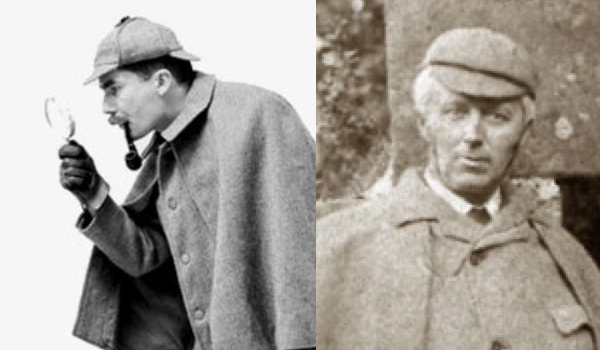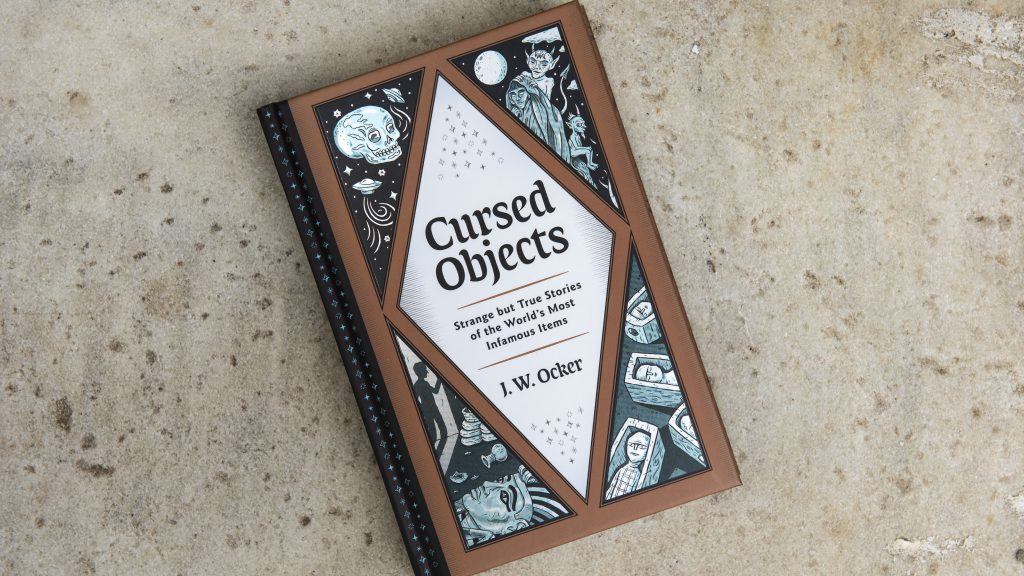Ten Fictional Characters Inspired by Real People
Despite being fictional, literary characters are near and dear to our hearts. But sometimes, those fictional characters turn out to not be so fictional after all. Yes, even famous whales and grumpy Potions professors have ties to living, breathing things. It's art imitating life in the most literal sense. Or rather, art stealing bits of life. Here are ten incredible examples.
SHERLOCK HOLMES in The Sherlock Holmes Stories by Sir Arthur Conan Doyle
INSPIRED BY: Dr. Joseph Bell
Arthur Conan Doyle met surgeon Dr. Joseph Bell in 1877, when he served as his clerk at the Edinburgh Royal Infirmary. After writing several popular stories about consulting detective Sherlock Holmes (who really needs no introduction), Doyle admitted that the man was at least partially inspired by Bell's super observant ways and his ability to make large assumptions with little evidence. Apparently, Bell was quite proud of the connection and even went on to help with police investigations in Scotland alongside Sir Henry Littlejohn, whom Doyle also cited as an influence. In a letter to the author, Bell even joked, “You are yourself Sherlock Holmes and well you know it.”

ROLAND in The Archived Series by Victoria Schwab
INSPIRED BY: David Tennant
In Victoria Schwab's fabulous young adult series The Archived, a mysterious man known as Roland is a Librarian tasked with taking care of the Archives, a place where the shells of the dead are housed on shelves like books in a library. Described as a Scottish gentleman with ageless eyes, floppy hair and a penchant for Converse sneakers, Schwab has admitted that Roland is directly inspired by her favorite Doctor: David Tennant. After all, it was Ten who exclaimed to his companion Rose Tyler, “You want weapons? We're in a library! Books! The best weapons in the world! This room's the greatest arsenal we could have – arm yourselves!”

TINTIN in The Tintin Comics by Hergé
INSPIRED BY: Palle Huld
In 1928, at the age of merely 15, Danish teenager Palle Huld went on a journey around the world, inspiring the globe-trotting character of young Tintin. Huld's journey came about with help from the newspaper Politiken, who held a competition open to teen boys in honor of Jules Verne in which they would travel the globe for 46 days…completely unaccompanied. Huld travelled to England, Scotland, Canada, Japan, Korea, China, the Soviet Union, Poland and Germany before returning to Copenhagen 44 days later to a crowd of 22,000 excited people. Sadly, he did not have an adorable Scottish Terrier with him upon his return.

MOBY DICK in Moby Dick by Herman Melville
INSPIRED BY: Mocha Dick
That's right, literature's animal with the dirtiest name – the infamous Moby Dick – was so named after the even dirtier real life whale Mocha Dick. Mocha Dick was a 70-foot-long albino sperm whale who was said to have destroyed over 20 whaling ships and escaped encounters with another 80. (Because this is what happens when you mess with nature.) The whale was so named after being spotted off the coast of Chile near Mocha and Dick because apparently it was common to give whales typical male names. He met his untimely end when he witnessed a whaling ship kill a mother and her babies and he died trying to avenge them. True story.

DORIAN GRAY in The Picture of Dorian Gray by Oscar Wilde
INSPIRED BY: John Gray
Super-attractive poet John Gray inspired who else but the super-attractive poet turned soulless deviant Dorian Gray. John Gray would go on to escape Oscar Wilde's circle of friends and paramours and become a priest, perhaps to escape the temptation to make a deal with the devil so he would stay beautiful forever. Kidding. Scholars note that The Picture of Dorian Gray was almost certainly meant as a way for Wilde to court John. Especially because he named the title character Dorian (after the Greek group the Dorians who believed in love between men) but chose to keep John's surname Gray. After humbly accepting the similarities, John would later go on to deny any associations between him and his fictional self.

SEVERUS SNAPE in Harry Potter by J.K. Rowling
INSPIRED BY: John Nettleship
One of the most simultaneously reviled and loved professors in J.K. Rowling's series Harry Potter, Severus Snape, actually took several characteristics from Rowling's chemistry teacher John Nettleship. And apparently the similarities were noticed by everyone but the teacher. When people started asking him if he was Professor Snape, his wife had to let him down gently by explaining, “Of course you are – but I didn't want to tell you.” The long-haired, long-nosed professor (who really doesn't think he's as mean as a man who berates orphans) said the whole thing was made slightly better when Snape was portrayed by Alan Rickman. Sadly, Nettleship passed away in 2011 after a battle with cancer.

JEAN VALJEAN and INSPECTOR JAVERT in Les Miserables by Victor Hugo
INSPIRED BY: Eugene Francois Vidocq
Both the “criminal” Jean Valjean who was brought in for stealing a loaf of bread and Inspector Javert, the guy who refused to let that bread thing go, were inspired by Eugene Francois Vidocq. In his life, Vidocq started out as the protagonist, escaping prison and going on the run for several years as a factory owner and businessman before becoming his own antagonist. Making a deal with authorities, Vidocq would go on to use his criminal-wiles in order to hunt down and capture other criminals. He also actually lifted a cart off a sailor saving his life. His escapades also helped to inspire Edgar Allan Poe to write what would be the very first example of detective fiction.

EBENEZER SCROOGE in A Christmas Carol by Charles Dickens
INSPIRED BY: John Elwes
You know that grumpy old fictional man by the name of Ebenezer Scrooge who is visited by three ghosts in order to learn the true meaning of Christmas? Unfortunately, he was inspired by an even more miserly man, a Member of Parliament named John Elwes. Elwes inherited his uncle's fortune and took up his eccentric behavior, going to bed as soon as the sun set to save on candles, wearing old clothing to avoid buying new ones, letting his house fall into disrepair to avoid costs to fix it and even eating moldy food. So nope, he never bought anyone a goose for Christmas dinner. Elwes wasn't the only person to inspire Dickens, however—three different spinsters were the proto-Miss Havisham in Great Expectations.

LONG JOHN SILVER in Treasure Island by Robert Louis Stevenson
INSPIRED BY: William Henley
The character of famed pirate Long John Silver was actually inspired by Robert Louis Stevenson's friend William Henley, a writer and editor. Henley was described by Stevenson's stepson as a good-natured man with a large laugh, a big red beard and a lust for life whose left leg was amputated below the knee because of a bought of tuberculosis in childhood. After the publication of the novel, Stevenson adorably admitted to his friend, “I will now make a confession. It was the sight of your maimed strength and masterfulness that begot Long John Silver…the idea of the maimed man, ruling and dreaded by the sound, was entirely taken from you.”

NORMAN BATES in Psycho by Robert Bloch and BUFFALO BILL in Silence of the Lambs by Thomas Harris
INSPIRED BY: Ed Gein
If you haven't read Robert Bloch's psychological horror novel Psycho, chances are you've at least seen Hitchcock's film version of Psycho. If you were unaware, the guy who brought new meaning to the term Oedipus Complex, Norman Bates, was inspired by real life murderer and grave robber Ed Gein, who led a dual life as a handyman and a crazy person who spent his time trying to make clothing and furniture out of the skin of women who reminded him of his mother. Sound familiar? Gein also inspired Silence of the Lambs killer Buffalo Bill. Fun fact: Gein's nefarious deeds also led to the creation of the horror movie villain Leatherface and American Horror Story's Bloody Face.



